What Factors Make Latin America The World's Most Violent Region?
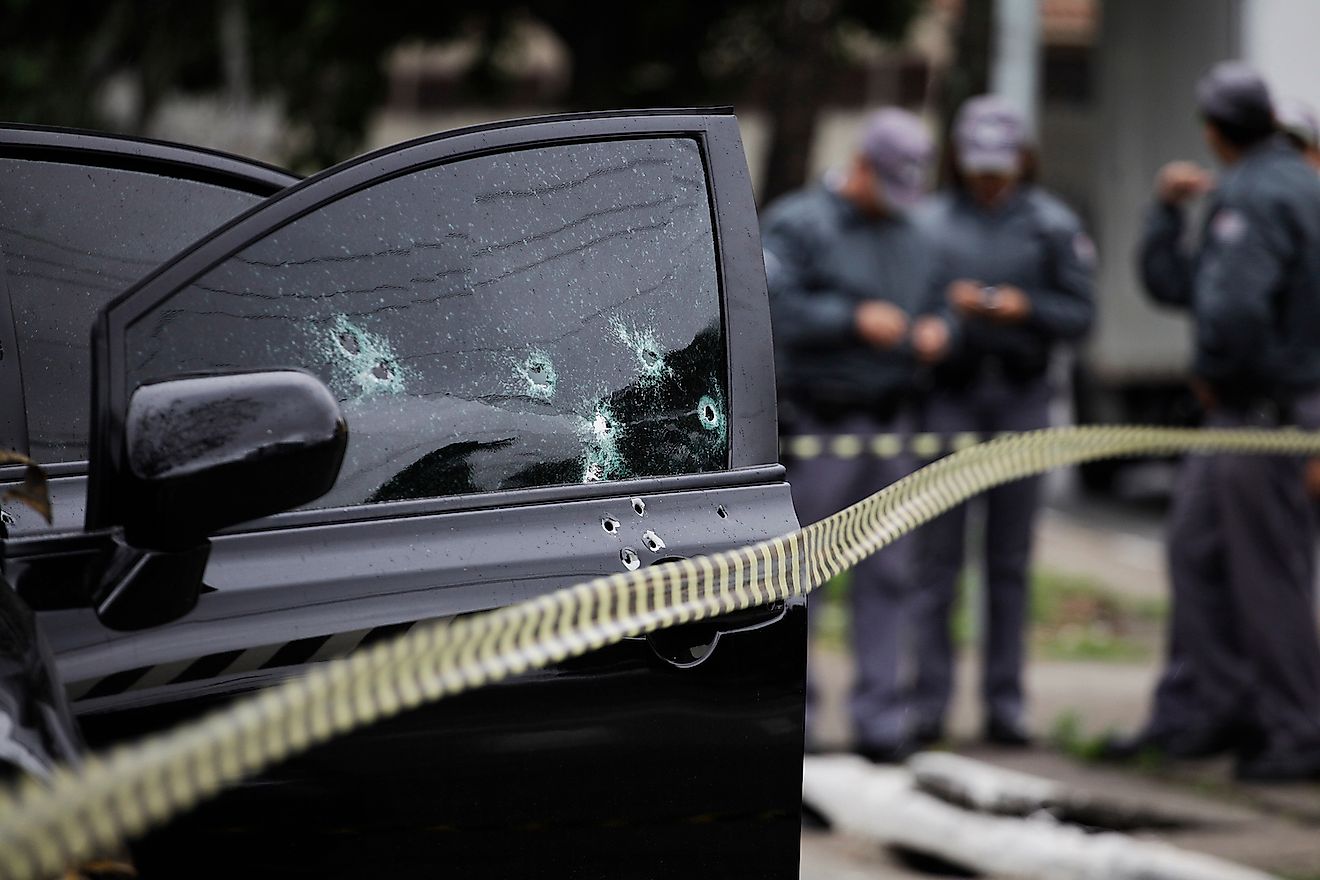
- Poverty, a lack of equal access to good education, the illegal drug trade, corruption and organized crime all contribute to violence in Latin America.
- The US plays a key role in perpetuating violence in countries like Mexico and Colombia as over 90% of the illegal drugs produced by these countries are purchased and consumed by Americans.
- In some ways, the presence of organized crime in Latin America helps to keep order in lawless areas but it also contributes to high levels of violence.
Latin America has seen its fair share of conflict. Outside of real, active official war zones, Latin America is considered to be the most violent region in the world. How much violence is taking place varies from country to country. Overall, however, there is a lot of bloodshed. In 2016, there were about 400 murders taking place each day, adding up to about ⅓ of all homicides on Earth. To put that in context, Latin America is home to just 8% of the world’s population.
According to Pew Research, people living in Latin America consider crime and corruption to be the biggest problems in their countries. The majority of people living there also consider inequalities in accessing healthcare, good schools, clean water, clean air and safe food to be problematic.
Here are five factors that are contributing to Latin America’s overwhelming levels of violence.
Prevalent Poverty
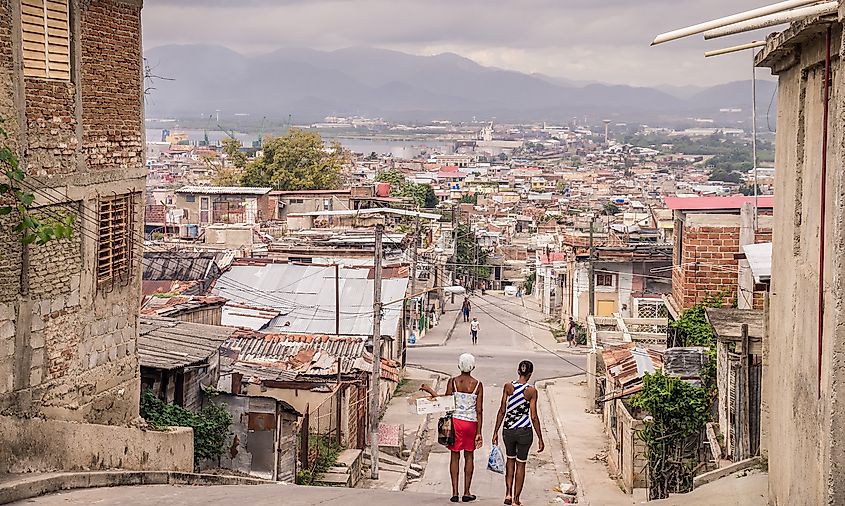
Statistics show that about 30% of the population in Latin America was living in poverty in 2017, and a further 10% in extreme poverty. People living in extreme poverty have trouble finding and keeping a home, and having enough food to eat.
The inequalities that exist between the well-off and those without in Latin America is something that pushes people into lives of crime, in order to feed their families.
Poverty exists in part because Latin America’s cities have grown very quickly compared to those in other parts of the world in the past 50 years. More than three-quarters of the region’s population now lives in cities, which is double the proportion found in other growing areas such as Africa and Asia. It took Brazil’s Sao Paolo just 25 years to add 8 million people to its population. In comparison, it took New York City 150 years to reach a size of just 1 million people.
This rapid boom has made it hard for local economies in Latin America to keep pace. The result is not enough jobs and a lack of necessary infrastructure to support everyone.
A lack of government support via organizations like food banks also leaves poor people in desperate situations. Governments in Latin America are also known for not yet supplying reliable electricity, clean water, and roads to all areas of all countries. This is leaving people living in rural areas stuck.
Sometimes the only way out of poverty seems to be through supporting violent schemes like the illegal drug trade. In this way, violence is contributing to the violence in Latin America.
A Lack of Equal Access To Education
Poor people in Latin America have a harder time accessing good education than those with good family incomes. The majority of the poor in Latin America are illiterate or barely literate. In Brazil, for example, the poorest 40% of teenagers aged 15 to 19 have an average of just four years of schooling.
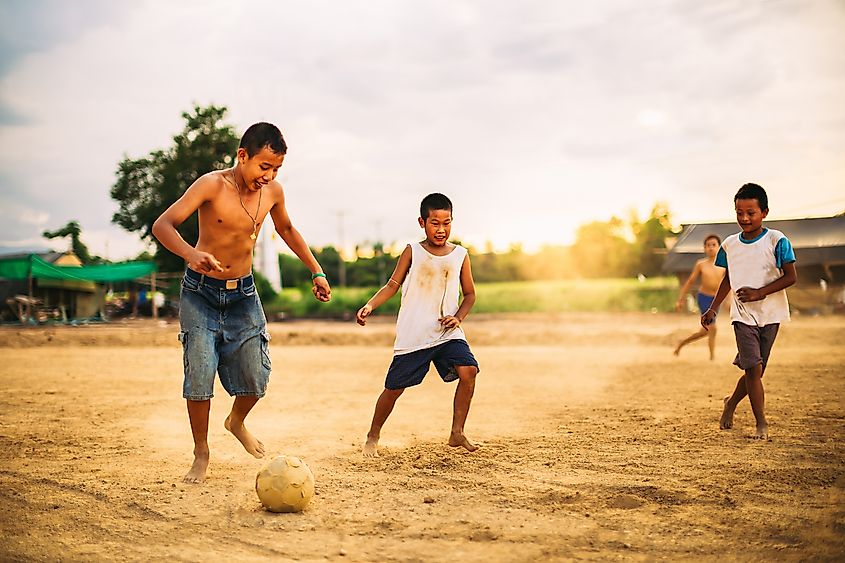
It is to be celebrated that about 9 in 10 children in Latin America enroll in the first grade, but very few in poverty continue on to finish highschool. Most poor children must enroll in lower-quality schools, and have a harder time attending on a regular basis. Children in poverty generally miss more school than their wealthier counterparts due to health problems, they have less support at home for completing homework, and they miss more school due to family and economic needs.
Some reports indicate that up to 17% of students in Paraguay and Guatemala actually said they had missed school for more than three months in a row.
These inequalities in equal access to an equal education is perpetuating poverty, which in turn perpetuates violence in Latin America.
The Drug Trade
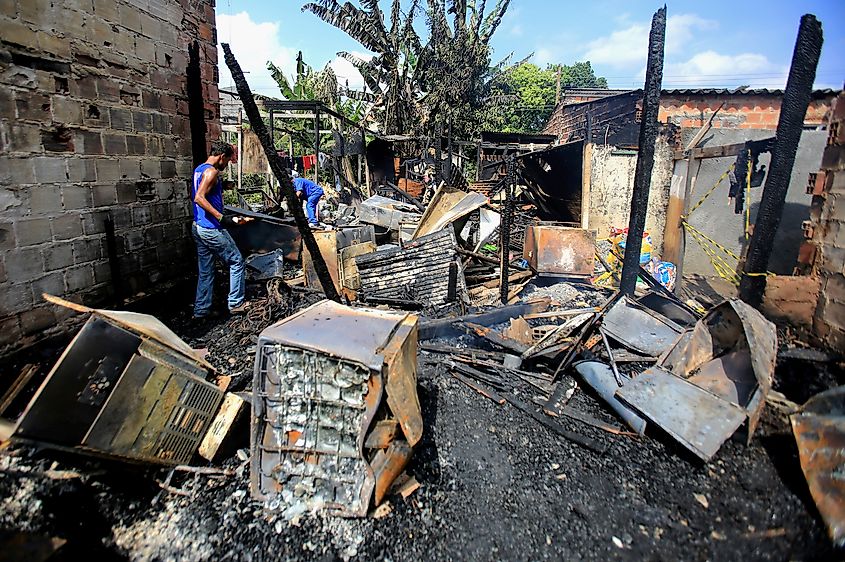
In 2015, about 90% of the cocaine seized in the US originated in Colombia. In addition, about 90% to 94% of the heroin consumed in the US has come from Mexico. Not every country in Latin America is a heavy participant in the illegal drug trade, but some play a large role. It is hard to figure out exactly how many deaths and other acts of violence can be directly attributed in Latin America to the illegal drug trade, but it is widely agreed that the answer is many.
According to one BBC report, during Pablo Escobar’s reign as a drug lord in Colombia the murder rate was about 80 people for every 100,000 per year. In the UK at the same time, it was 1 person for every 100,000 and in the US, five people for every 100,000. That’s pretty dangerous.
Organized Crime
The proliferation of organized criminal gangs in Latin America is a huge factor contributing to violence. Unemployment runs up to highs of 30% throughout some regions of Latin America. And a lot of people who do have a job still cannot pay their bills. With high rates of youth unemployed, more turn to organized crime to survive.
The organized crime gangs in Latin America include Mexico’s Sinaloa cartel. This group is said to be connected to about 150,000 intentional homicides since 2006. The Sinaloa cartel gains somewhere between $19 billion and $29 billion in illegal drug sales each year.
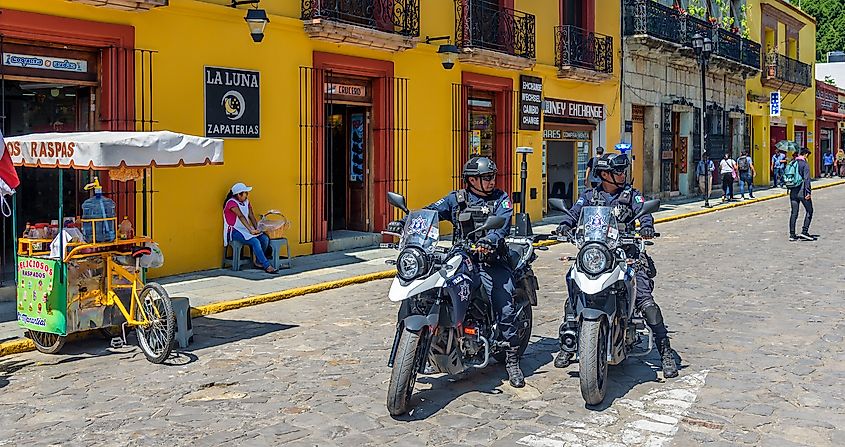
Brazil’s Red Command and First Capital Command gangs rule many neighborhoods in Latin America and gangs like MS-13 now dominate areas in Central America such as Honduras and El Salvador, all aiming to get a piece of the pie.
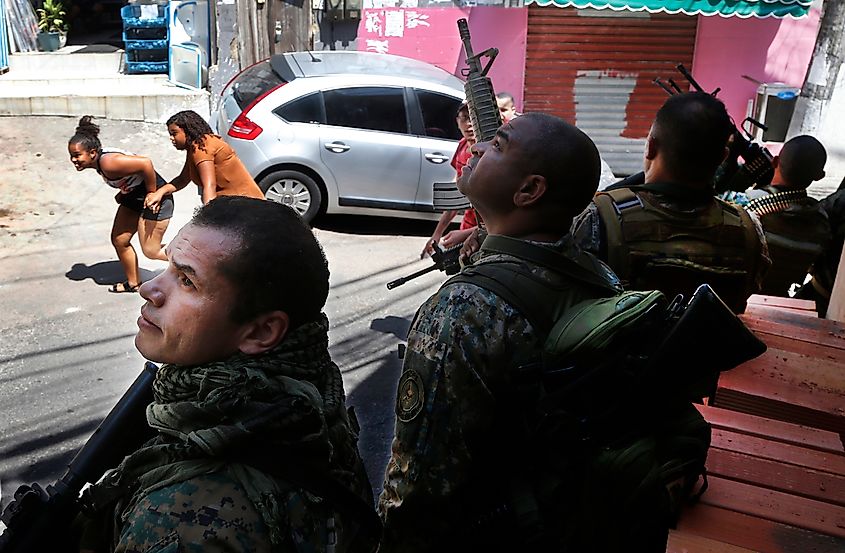
Gangs are so powerful in places like Brazil that they can take the place of the military and police. In Rio de Janeiro’s favela City of God, (an unofficially-constructed neighborhood that constitutes a slum), gangsters even took it upon themselves to inflict a curfew on residents to keep the coronavirus from spreading during the pandemic. In some ways, the presence of organized crime in Latin America helps to keep order in lawless areas. It also contributes to high levels of violence.
Corruption
Officials accepting bribes to keep their nose out of fishy, illegal business is common practice in many Latin American countries. So is the practice of elites spreading the wealth among their friends. Little is shared with the commoners who need it most. These forms of corruption help to keep crime going, and the poor disadvantaged.
Corruption is seen as the second biggest problem behind crime by those living in Latin America, according to Pew Research.
When officials in government and the police do not stand up to criminals, this allows the violence to keep on going. It also leads people to find their own solutions. Private security is hired, and perpetrators go free. The consequences for murder remain low compared to other places in the world. Because of this, violence is allowed to continue and grow.
Latin America is making some small strides towards becoming less violent. The decriminalization of illegal drugs in North America could contribute to lowering the levels of violence in Latin America. Other steps need to be taken as well for a brighter future. Organizations like the World Bank have conducted studies that seek to examine crime and violence in these countries and how people living there encounter these phenomena at different points in their lives. The goal is to redirect individual and government efforts into programs and policies that will lead to a safer future. Hopefully, this will allow crime rates to drop and people in Latin America to enjoy more carefree lives.











